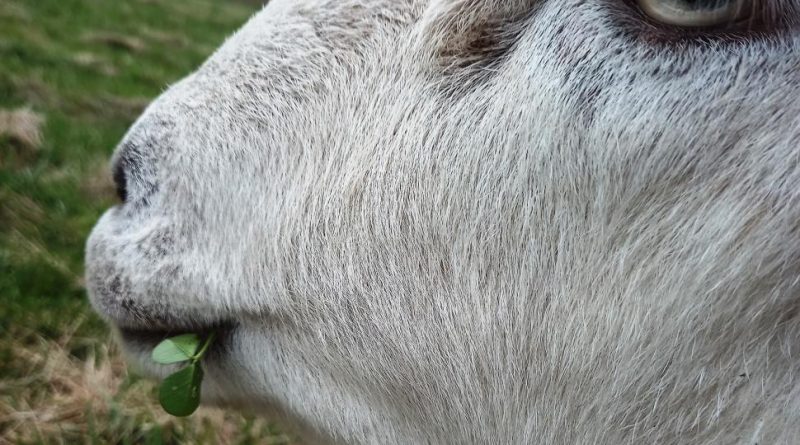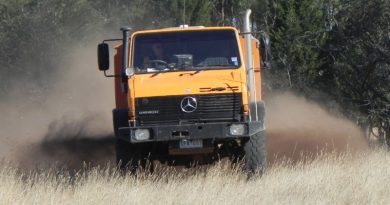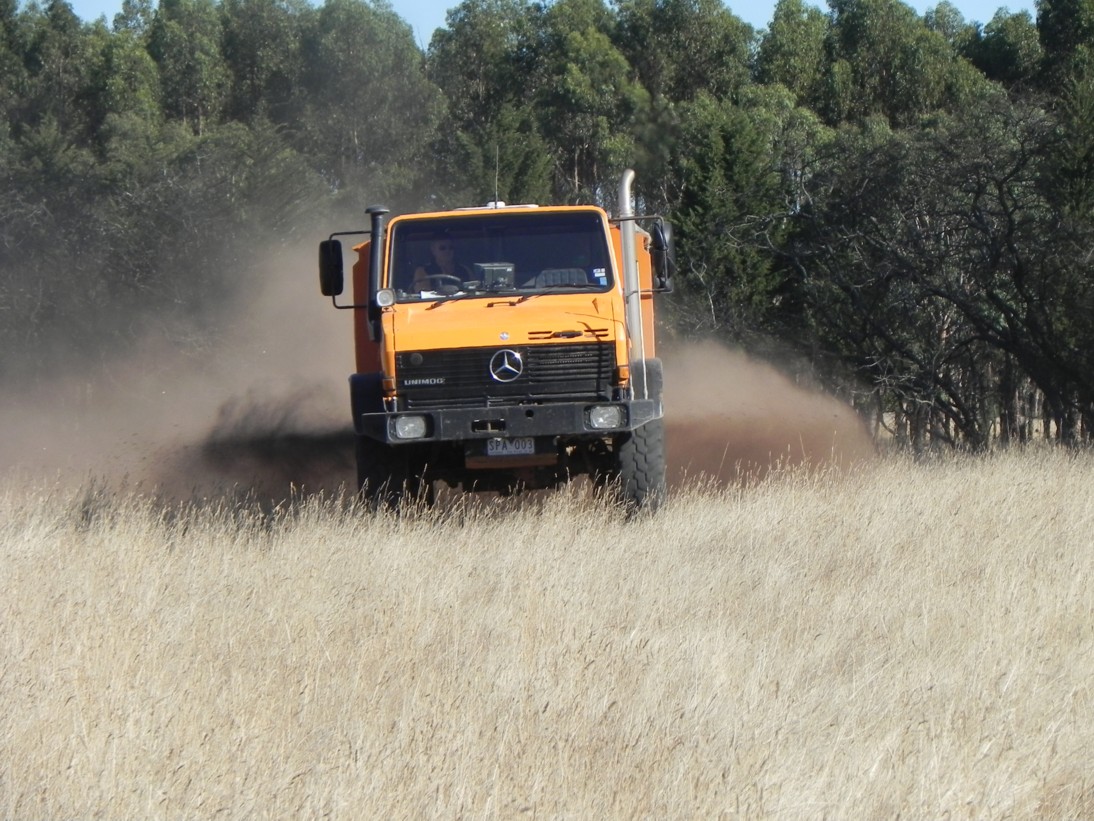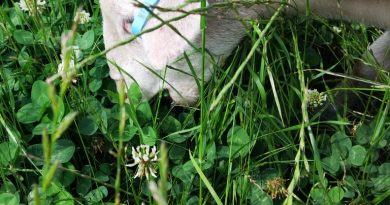Irish multi species pastures lift livestock productivity
By Patrick Francis
Advocacy for sowing multi-species perennial pastures across higher rainfall regions of south eastern Australia has been strong since the early 2000s. It has faced considerable criticism from conventional pasture agronomists who contend that the proven resilient pasture is one based on phalaris and sub clovers. Adding more perennial grass species is not warranted as over time phalaris will be the only surviving species. A considerable body of research data supports this position.
Research data showing the benefits of multi-species perennial pastures over the simple phalaris sub clover pasture in south eastern Australia is not available but European research is revealing interesting outcomes. My earlier article on this topic highlighted European research which found lambs nearly doubled their daily pasture intake on multi-species pasture compared with single species pastures. But this research carried no livestock performance data or pasture plant longevity or persistence data.
However, recent research conducted by a range of scientists in the Heartland Project on a university farm near Dowth Ireland has uncovered revealing cattle and lamb growth rate, carcase performance, and methane emissions results on multi-species perennial pastures versus single species pastures. The relevance of the data could be questioned based on the different climate experienced in Ireland versus south east Australia, but the pasture species sown are commonly used in higher rainfall zones here. In fact most of the species are part of the multi-species pasture mix used for lamb finishing on Moffitts Farm.

Figure: Many of the species included in the Irish multi-species pasture research are increasingly used in the higher rainfall temperate regions of southern Australia. They include chicory, white clover, red clover and ryegrass as in this photo on Moffitts Farm in central Victoria. Photo: Patrick Francis.
The Project’s emphasis on managing pastures is based on the premise that pasture composition can affect five critical soil ecosystem functions:
* Production of food and fibre.
* Ensuring water purification, that is cleaner stream and sub surface water.
* Recycling of (external) nutrients and de-naturing agro-chemicals.
* Providing habitat for above and below surface biodiversity.
* Improving carbon storage and sequestration.
Subsequently adjusting pasture composition can bolster soil ecosystem functions and result in improved nutrition for grazing animals while lowering methane emissions.
There was another imperative behind investigating multi-species pastures against the dominant pasture system – monoculture ryegrass, to reduce the systems dependence on nitrogen fertilisers which are costly to apply and “…have negative impacts on water, soil and biodiversity”.
The multi-species pastures in the research are based on a combination of perennial grasses, perennial legumes and herbs. There were two newly sown multi-species treatments – a six species pasture (6SP) and a 12 species pasture (12SP). These were compared to a newly sown perennial ryegrass pasture (PRG) and an old existing perennial pasture (PP) with around 30 different species present. The PP species were volunteers that had accumulated in the pasture over many years.

Comparing total biomass production over the year the 6S and 12S pastures were superior.

Results of biomass grown daily also came out in favour of 6S and 12S pastures. The researchers pointed out that even during dry periods in summer the multi-species pastures performed better than perennial ryegrass.

The research also looked into the impact of pasture establishment method direct drilling versus ploughing a seed bed. It found no significant difference in pasture dry matter yields or species establishment percentage between the two methods. However ploughing did result in more unsown species becoming established.
Livestock growth comparison
The livestock component of the Heartland Project compared the growth and carcase performance of rotationally co-grazed one year old Angus cross and Hereford cross heifers and Suffolk Texel cross weaned lambs on the four different pastures.
Heifer growth rate was highest on the 6SP and 12SP pastures. It is surprising how much better the 6SP growth rate was over the perennial ryegrass especially since the latter was so well supported with nitrogen fertiliser over the trial period. Nitrogen generally improves the palatability and subsequently intake of grass pasture with the assumption this leads to higher productivity.

The carcase dressing percentage (kill out %) of heifers grazing the 12SP and 6SP was higher than those on the PRG and permanent pasture (PP). While weight at slaughter data is not provided this effect is likely to increase as target carcase weights increase.

The improved cattle performance on multi-species improved pastures was replicated in the lambs with even greater difference. It is worth noting that not all multi-species pastures are equal. The researchers included a long standing perennial pasture (PP) in the trial. It comprised a wide range of older less desirable grasses which could be described as “multi-species” but not what is commonly known as “improved” species from modern plant breeding genetics. In south east Australia the sort of introduced species in this old pasture category would be bent grass, sweet vernal grass, Yorkshire fog grass, and annuals like barley grass, silver grass, rough dogs tail grass, and winter grass. All these introduced species are prevalent in many perennial pastures but livestock performance on them can be extremely low.
The 6SP and 12SP pasture mixes contain perennial grasses and herbs from plant breeding programs where plant characteristics have been bred for livestock performance and persistence under varying grazing management and soil fertility regimes.
In the trial the researchers refer to livestock turnout, this is when lambs are put on the trial paddocks presumably after being born in barns. With the ewes and lambs turnout happens at around four weeks of age. The lambs weights were measured every four weeks and by weaning those on the 6SP and 12SP pastures were around 5kg heavier than on PRG or PP.

The gain per day to slaughter on the two multi-species pastures was considerably higher than on the other two pastures. Our Moffitts Farm Wiltipoll lamb growth rates on equivalent pasture to the 6SP pasture mirrored these Irish results. When our lambs are grown on perennial grass dominant multi-species pasture growth rates do not exceed 250 grams per day. In contrast on our 6SP pastures (includes chicory and 4 perennial clovers) average growth rates up to 400 grams per day have been achieved.

The most startling impact of the multi-species pasture was on lamb days to slaughter with the 6SP lambs reaching slaughter target weight 40 days earlier than the PRG lambs and 27 days earlier than the PP lambs. This is close to 25% faster days to slaughter which has significant flow on effects for farm ewe carrying capacity potential and/or greenhouse gas efficiency.

The Heartland Project researchers modelled the livestock greenhouse gas impact and concluded that the 6SP pasture achieved a 28% reduction in emissions per livestock unit grazing on them compared with PP livestock and a 26% reduction compared with the PRG livestock.
The emissions reduction importance of lowering days to slaughter was recently emphasised by meat scientist Dr Peter McGilchrist, University of New England, at the JBS’s Great Southern beef and lamb supplier conference in Melbourne in June. He said “With the entire (Australian red meat) industry’s aspirations towards Carbon Neutral by 2030 (CN30) and moderating methane, efficiency of our production system becomes increasingly important. And number of days to slaughter weight is one of the biggest drivers of methane production”.
McGilchrist’s view was supported by JBS’s global sustainability officer Jason Weller who when asked about using feed additives like asparagopsis (red seaweed) and Bovaer to reduce methane production in the rumen said “If we look at the total enteric emissions volume of an animal over its lifespan, the quicker that animal can be brought to market, while still producing a quality product, the better, in terms of enteric emissions”.
The Heartland Project researchers acknowledged that in the year a multi-species pasture (due to fuel, herbicide and fertiliser emissions) is sown the emissions differences between the PP, PRG and 6SP pasture may not be significantly different and noted that 6SP pastures are not as persistent especially the herb and clover components. This means re-sowing or over-sowing will be required every few years to maintain their composition.
“One of the drawbacks of multi species is that their persistence is lower than PRG (and PP), with the herbs almost disappearing in less than five years. However, over-sowing specific species is possible and something to consider when evaluating MS persistence and sowing costs”.
Experience with 6SP pastures on Moffitts Farm concurs with this observation with the chicory component fading out over four years.
Just as it was surprising to find that the cattle dressing percentages were higher on the 6SP and 12SP pastures, the same result happened with lambs with even greater advantage. The 12SP lambs had a 4.9% higher dressing percentage than PRG lambs and 6SP lambs had a 4.0% higher dressing percentage. This has significant operating profit implications when 5kg extra carcase weight per lamb is priced at $7 to $8 per kg.

The final useful piece of information surrounding the multi-species pastures was their impact on ewe condition scores from lambing through to re-joining. Ewes on all the pasture treatments started at the same condition score when turned out into the paddocks. But those on the 6SP and 12SP had higher condition scores by weaning. The margin over the PGR and PP ewes continued to increase right up three weeks prior to joining.

Other research
The Irish Heartland project results showing the superiority of improved variety multi-species pastures is supported by cafeteria and in field experiment plant species richness levels conducted by Ling Wang et al in 2010. In their research “Mechanisms linking plant species richness to foraging of a large herbivore” they found sheep preferred a diverse diet of improved pasture varieties over a single diet even when palatable species were in the diet. “Voluntary daily intake steadily rose with increases in plant species richness in both cafeteria and field experiments …. until it reached a plateau at eight species.”
While the sheep ate more pasture per day as plant richness increased the researchers did not monitor livestock performance and could only presume it improved on the multi-species diets.
This research made an interesting comment on the research applicability to native pasture species common in Australia. These grasslands are generally low in nutritional quality (C:N is high) compared to introduced improved species “…so plant species richness will critically influence herbivore food intake, ….production and the conservation of biodiversity.”
Why the better performance?
The Irish Heartland Project research has provided much needed livestock data to demonstrate higher productivity associated with genetically improved pasture species when sown together as opposed to perennial grass monocultures or old low production or palatability introduced pasture species. The reason why these multi-species pastures are superior is alluded to in other research.
In the review “Matching type of livestock to desired biodiversity outcomes in pastures” A.J. Rook et al discuss pasture intake associated with different plant and animal currencies. For instance the carbon nitrogen ratio of pasture is considered to be important but when sheep and cattle are offered diets with different amounts of clover, it was the diet with a lower than expected C:N ratio – 70% clover which they preferred. “The (preferred) mixed diet is not due to intake rate maximisation since in this case animals would choose 100% clover as this species can be eaten faster. This suggests that rate of energy intake is not the currency that the animal is optimising, and that the true currency remains to be identified.”
Another currency identified affecting intake is disease status of animals. “When sheep were offered pairs of experimental swards, which varied in nitrogen content and level of contamination with faeces from parasitized sheep, low feeding motivation and subclinical parasitism resulted in an increased rejection of the nutrient-rich but contaminated swards.” This result suggests that if the grazing rotation is not sufficiently long to neutralise faecal parasite contamination then performance even on a 6SP pasture could be compromised.
Plant chemistry which is influenced by photosynthesis is another intake currency. Sheep and dairy cattle have shown a preference between grass and clover over the day with “…both including more clover in the diet in the morning and more grass in the evening. It has been hypothesised that this might be due to higher sugar levels in the grass at this time and hence higher digestibility or, alternatively, that it may be because the animal fills its rumen with relatively slowly digesting material in order to maintain rumen microflora populations during the over the night fast.”
Rook points out a range of other intake currencies other than the actual pasture species present including water availability, shelter and social cohesion. As well there are learning experience currencies as demonstrated by Fred Provenza who shows that “learning early in life is known to affect intake of relatively undesirable forages and foraging skills. “Consequently, sheep, cattle and goats placed in unfamiliar and complex environments spend up to 20% more time eating, but ingest as much as 40% less food than animals experienced in these environments.” How long livestock take to learn to graze particular species is highly variable with evidence suggesting that plant naïve sheep learn to graze the same plant within three to four weeks.
Take home message
Pastures embracing plant species richness to the tune of at least 6 to 8 perennial species are likely to become the objective of all ruminant livestock farmers across the agricultural and pastoral zones. There will be multiple species pastures to meet the needs of different classes of livestock such as sheep and beef cattle breeders, lactating dairy cattle, backgrounding and finishing lambs and cattle, and will embrace different species for pasture management purposes. For instance multiple annual species pastures sown at the start of a perennial pasture renovation are likely to take over from single species annuals like fodder brassicas and oats.
The implications of multiple species pastures for increased livestock productivity, lower methane emissions per kg carcase weight, improving soil health and increased above and below ground biodiversity will become difficult to ignore for businesses with a long-term future in the red meat sector in mind. Ensuring livestock managers have the holistic knowledge for maintaining species rich pastures while protecting and enhancing ecosystem functions in the face of an increasingly variable climate will be the challenge for the ruminant livestock industry.
Find out more:
Environmental Performance — Heartland (heartlandproject.eu)
What can we learn from a 6000-year-old farm? – Beef Central
Industry needs to build genetics focus on yield to address emissions challenges – Beef Central





Such an interesting article! Loved it. Can you tell me where to find more info on establishing a multiple species perennial pasture please? So far on my farm near Mudgee NSW) we’ve been planting fruit and nut trees and designing systems to rehydrate and nourish the soul and mictorganisms- eg swales and compost teas- but I’m now looking to introduce livestock- namely sheep- but need to learn the best way to do this. Any advice on sources of info would be greatly appreciated!
Hi Melissa,
With multi-species pastures establishment I suggest doing your own homework and investigate the legumes, herbs and perennial grass species suitable for your farm soil, livestock species and target livestock markets and grazing management. It is also important to know what currently exists on the farm. It is possible that existing pasture species could be adequate for your livestock enterprise but may need changes to grazing management by erecting fences for multiple paddocks for grazing rest and rotations. As a guide one prime lamb flock needs a minimum of 14 paddocks (more is better) so that the ewes and weaned lambs can rotate separately and the lambs are eating highly palatable species which enables them to grow at least at 150grams per day. Two or three more smaller paddocks are needed for rams. The digestibility and palatability of pasture species is important to know and it will be impacted by grazing management and soil fertility. Check your soil nutrient status as it not only impacts pasture growth but also species palatability. I favour having some paddocks with around 50% perennial clover species growing in conjunction with perennial grass species and herbs, because the perennial clovers can supply nitrogen into the soil for use by the grasses and herbs which boosts their growth and palatability. To cut a long story short talk to local seed retailers or seed supply companies to find out what species have been successfully grown in your district and are persistent through dry and wet years (persistence is closely related to grazing management not simply the species planted). So find out about species persistence under different grazing regimes. Select a range of species to sow eg five perennial grasses (some could be summer active species some summer dormant versions of the same species); if summer rain is common then at least three perennial legumes plus three annual legumes; finally you might have some specific weaned lamb finishing pastures (also good for lambing paddocks) which are dominated by herbs like chicory and or plantain plus clovers and perhaps one perennial grass. The chicory and plantain are not long lived and may last two to four years depending on grazing management before direct drill resowing the herbs. The clovers and grass should persist for many more years so re-sowing is over-sowing the chicory and or plantain. Given the uniqueness of each farm, it livestock species and markets, and its management its important owners do their own homework on species to introduce. Don’t be afraid of establishment failures, sometimes seasonal conditions after sowing can cause failures, but keep trying – if a spring sowing fails try again in autumn and vice versa.